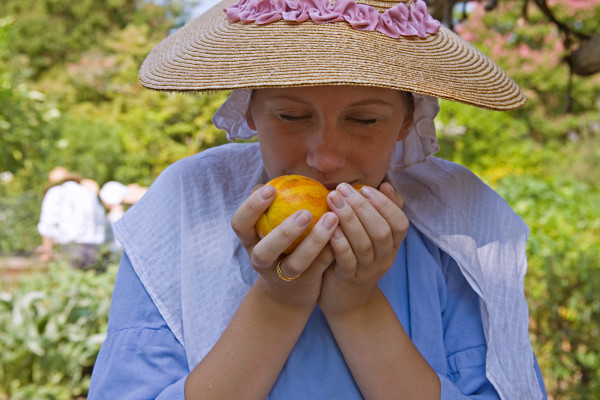 The month of July provides us with a luxury of melons described by John Evelyn in 1699 as “Paragon with the noblest Productions of the Garden.”
The month of July provides us with a luxury of melons described by John Evelyn in 1699 as “Paragon with the noblest Productions of the Garden.”
Evelyn also observed that, “this Fruit was very rarely cultivated in England, so as to bring it to Maturity, till Sir Geo. Gardener came out of Spain. I myself remembering, when an ordinary Melon would have been sold for five or six Schillings.”
The difficulty of procuring this fruit in England is the shortness of the season and the normally cool weather. As late as 1845, Jane Loudon wrote in The Lady’s Country Companion: “I would not advise you to grow cucumbers or melons; but, should you feel inclined to try your skill, you have only to have a hotbed.”
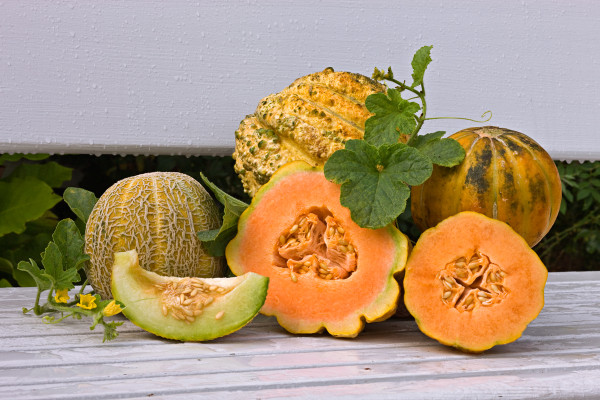
Here in Virginia, we are blessed with a long hot season which allows us to produce quality melons without the extravagance of hotbeds. This was commented upon by William Hugh Grove when he visited Virginia in 1732, writing “Musk Melons are plentiful Enough but they plant them among their Corn in ye shade & ordinary ground without any Care as our Gardeners use & have not the Advantages of Soyl or Sun & Consequently [the] high flavor of our English Melons.” (The unfavorable comparison to the English melon is predictable enough from the pen of an Englishman).
Of note is the fact that he found the musk melon rather than the cantaloupe in Virginia as the musk melon quickly became the favored variety in this country almost to the exclusion of the true cantaloupe. In 1806 Bernard McMahon, a Philadelphia nurseryman, remarked, “The true Cantaleupe or Armenian warted Melon, is very scarce in the United States; its fruit is large, roundish and deeply ribbed, a little compressed at both ends, the surface full of warted protuberances, like some species of squash.”
The word, cantaloupe, derives from a papal estate near Rome by the name of Cantalupo where this variety was first introduced to Italy from Armenia in the middle of the sixteenth century.
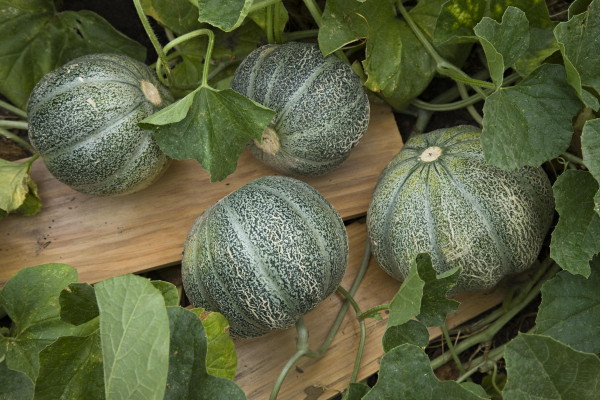 By the middle of the 19th century, Americans began using “cantaloupe” to describe the musk melon as recorded by Liberty Hyde Bailey in the 1858 Hortus who wrote that the musk melon was: “now widely cultivated in many forms in North America, mostly under the erroneous name ’cantaloupe‘ which is properly applied to a race with hard and scaly or warty rinds and seldom grow with us.”
By the middle of the 19th century, Americans began using “cantaloupe” to describe the musk melon as recorded by Liberty Hyde Bailey in the 1858 Hortus who wrote that the musk melon was: “now widely cultivated in many forms in North America, mostly under the erroneous name ’cantaloupe‘ which is properly applied to a race with hard and scaly or warty rinds and seldom grow with us.”
One reason for the confusion (that persists to this very day) may be that the ancient cantaloupe was characterized by having an orange flesh while the original musk melon typically had green flesh. About the time the true cantaloupe disappeared, the orange fleshed musk melon appeared so we just substituted the name. The musk melon has several advantages over the cantaloupe. It tends to be sweeter and more productive, that is, producing more fruit per vine than the cantaloupe. The musk melon also spontaneously separates from the vine when fully ripe which makes judging its suitability for harvest simplicity itself.
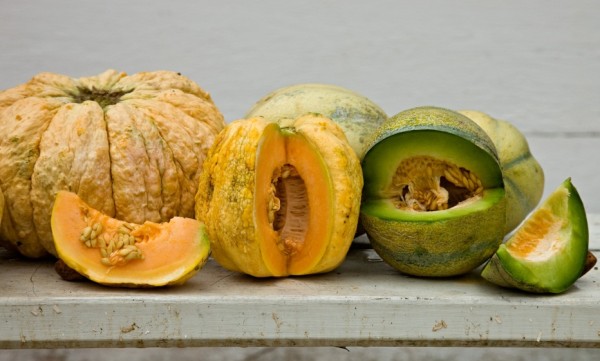 The greatest danger to either the cantaloupe or musk melon is an overly wet season when the fruit is ripening. As Richard Bradley correctly observed in 1739, “Give them gentle Waterings now and then, if the Earth be extreme dry: for Melons do not delight in abundance of Wet; neither will the Fruit be well tasted, if the plants are kept too moist.”
The greatest danger to either the cantaloupe or musk melon is an overly wet season when the fruit is ripening. As Richard Bradley correctly observed in 1739, “Give them gentle Waterings now and then, if the Earth be extreme dry: for Melons do not delight in abundance of Wet; neither will the Fruit be well tasted, if the plants are kept too moist.”
We have had an exceptionally wet season thus far and the cantaloupes, in particular, have suffered, cracking before they come fully ripe and lacking the sweetness for which they are known. However, all trials in the garden provide their own lessons and we have now discovered that the pineapple musk melon, a variety favored by Mr. Jefferson, remains sweet even in a rainy season so we can, with confidence, recommend this to you as an insurance against too wet a year!
Blogger: Wesley Greene
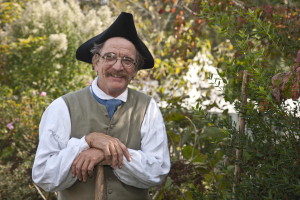 Wesley has spent 30 years researching historic plants and recently shared his findings in his book, Vegetable Gardening the Colonial Williamsburg Way. Wesley studied botany and plant and soil science at the University of Maine. In 1996, he founded the Colonial Garden and Nursery in the Historic Area of Colonial Williamsburg. That’s where you’ll find him in his element, interpreting 18th-century plants, tools, and cultural techniques.
Wesley has spent 30 years researching historic plants and recently shared his findings in his book, Vegetable Gardening the Colonial Williamsburg Way. Wesley studied botany and plant and soil science at the University of Maine. In 1996, he founded the Colonial Garden and Nursery in the Historic Area of Colonial Williamsburg. That’s where you’ll find him in his element, interpreting 18th-century plants, tools, and cultural techniques.

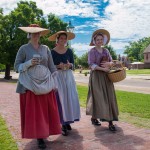
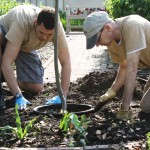
Kathy Boyes says
Thank you for your most informative article. I have been reading some English writers on melons and they have failed to clarify the differences between what we call rock melons or cantaloupes in Australia and the melons shown in 17th century paintings as referred to by Jane Grigson in her “Jane Grigson’s Fruit Book” (Penguin, 1983). You have made it clear that ours, which are fawn-skinned and orange-fleshed, must be musk melons, not true cantaloupes.
My dearest Wesley,
I am pleased to read your selection on the melons. I am also pleased to be planning a trip to the northern colony in the coming days. I have arranged accommodations for a tavern room. My fondest desire is to stroll and see the garden. I have a new situation which will allow me to plant some time-honored plants and I need to see what is available for purchase while I am there.
Fondly,
Dawn
Wesley says
Dearest Dawn, I am so happy to hear that you intend to travel to Williamsburg and I look forward to seeing you in the garden which I tend Sunday through Thursday. Please introduce youself when you arrive.
Cordially, Wesley Greene
Enjoyed the melon blog. Happy to see you under the new format. I have missed the weekly garden blog. Happy to see you back.
Thank you for the article on melons. My wife and I talked to you last year. I hope you got the copy of the Riverside, California Press Enterprize we left for you on our last visit.
Stay well,
Steve